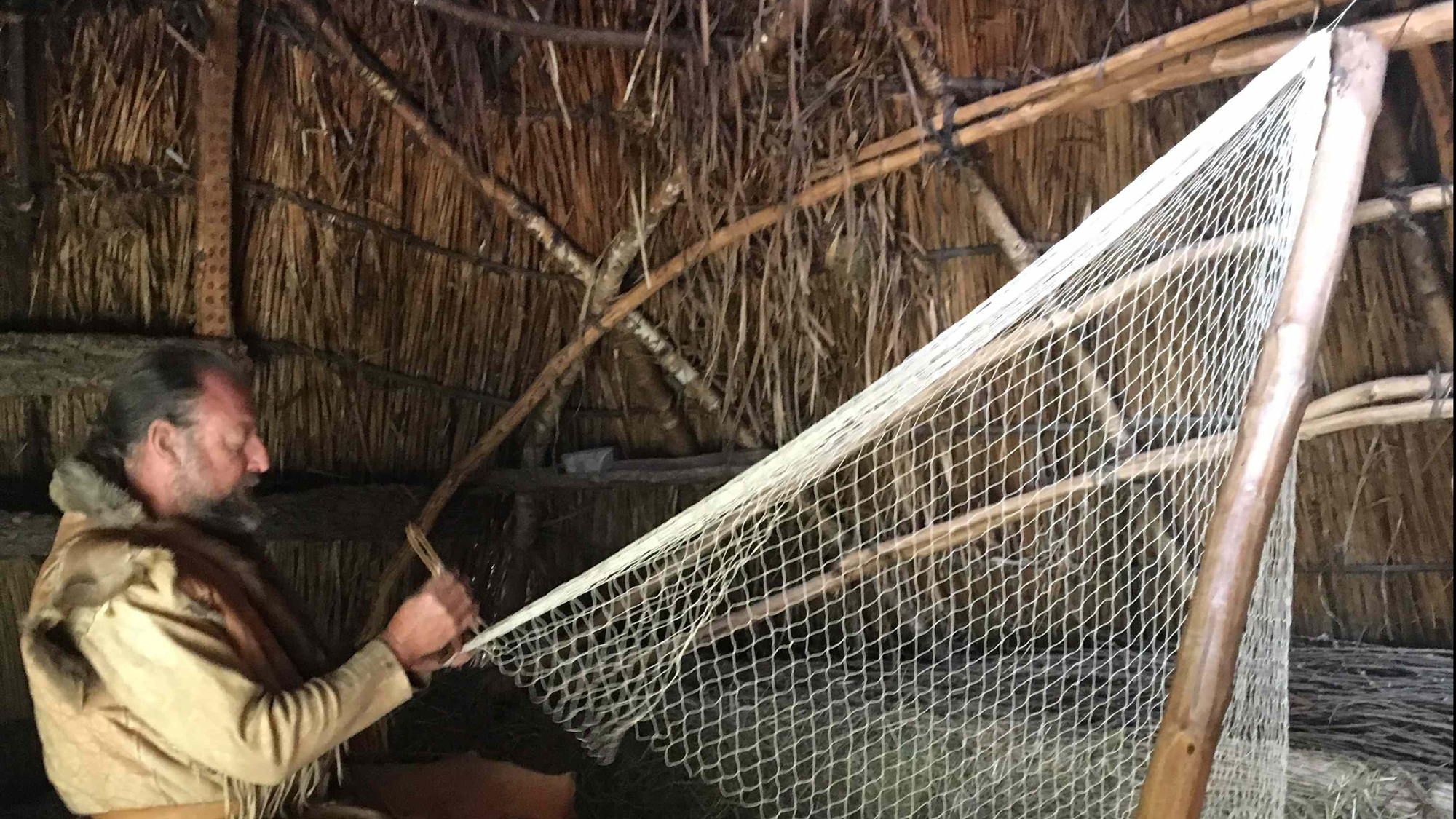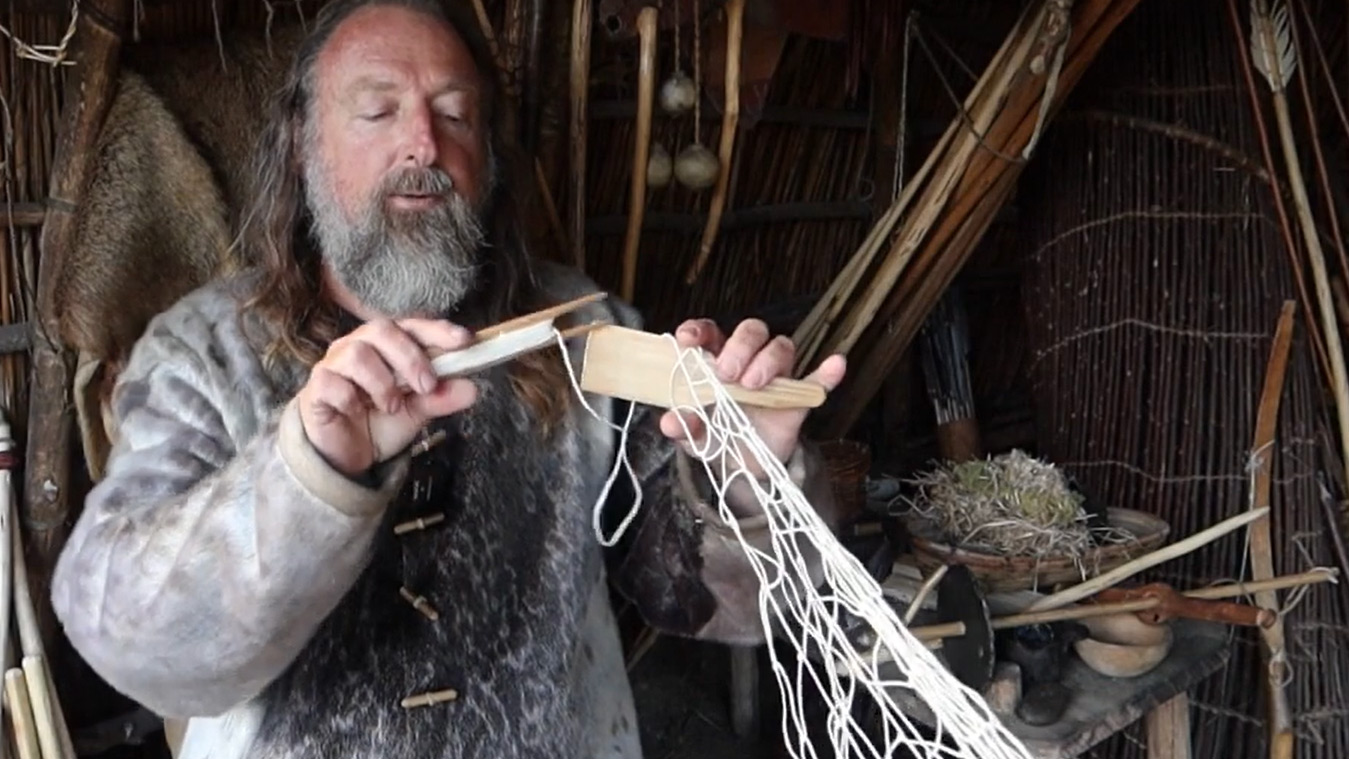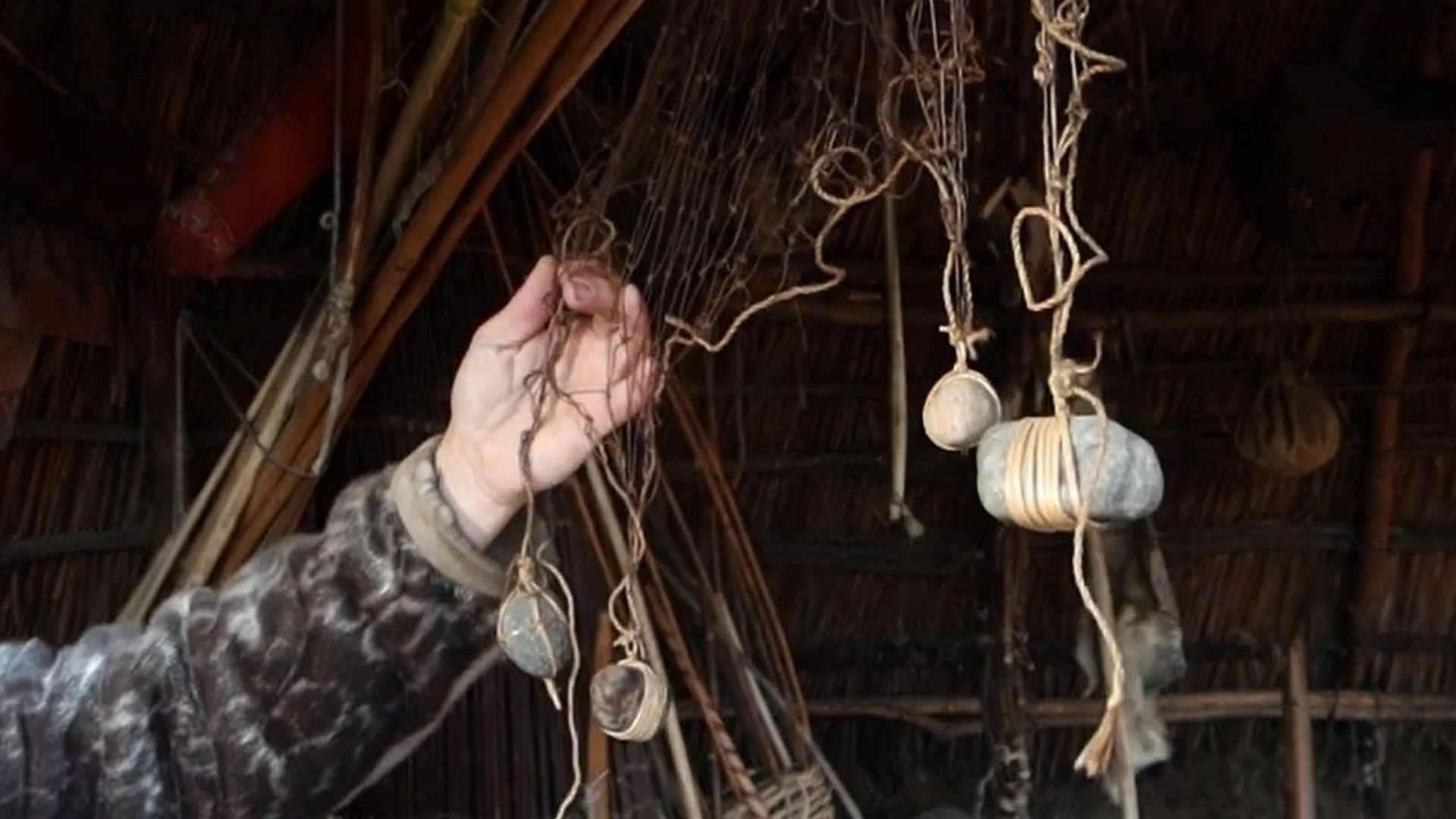Weaving a fishernet in the Stone Age Park Dithmarschen (DE)

Name of the craft in English: Weaving a fishernet
Name of the craft in local language: Weben eines Fischernetzes
Local Language: German
Type of craft: Traditional (craft is still practised)
Category of craft: Fibre and textile crafts, Needlework
Short description of the craft:
Weaving a fishernet - with a web boat and a thread.
What is the historical /archaeological time period of the original craft:
Mesolithic, Neolithic, Chalcolithic, Bronze Age, Iron Age, Roman Era, Viking Age, Early Middle Ages, Late Middle Ages, Newer Era
What years was/is the craft practiced: 8.000 BC until today
Where does the craft originate: Invented at different places in the world and still worldwide used
Primary crafter: Werner Pfeifer (DE)
Crafter's role in the documentation process: Demonstrator (storyteller)
The crafter has been practicing this craft for: 15-20 years
Is practicing this craft the main occupation of the crafter: No
What is the main occupation of this crafter: Educator in the Stone Age Park Dithmarschen
Does the crafter practice any other crafts: Yes
Other crafts: flint Knapping, fishing, cooking, hunting, building camps and modells
The crafter's motivation for learning this specific craft: Personal interest, Learning something new, Producing (unique) things, Doing something useful, Teaching patience
Does the crafter have regular contact with colleagues: Yes
Number of colleagues: 80
Which describes the crafter's habitual working area best: Rural Workshop
How did the crafter learn this craft: From one or more persons (informal)
Please provide the context: Learning about Weaving a fisher net in "Viking Age" context
Does the crafter teach this craft: Yes
Where / how the crafter teaches: The crafter teaches one or more persons (informal)
This process is: To modify an existing product
Which of these options best describes the work area during this craft activity: Rural workshop
Name each working technique (keyword):
• weave
Phase 1

Number and name of the phase:
1. Weaving the net
Description of this phase:
Here the net is produced, by putting the threads into the correct place (by weaving it), using the wooden shuttle and the wooden scale piece. The threads have different qualities: the best / most stabile is made from linden bast; the nettle is not so stabile, but easier to produce; the (industrial) linen bast is easiest (and cheapest) to obtain, just by order the modern product. The linden and nettle threads have to be produced individually.
Time: Several weeks
Tools used in this phase:
Wooden scale piece, Shuttle (weaving)
Installations used in this phase:
Construction to hang up the net
Materials used in this phase:
Thread (branches of a willow tree), Thread (linden bast), Thread (nettle fibres)
Phase 2

Number and name of the phase:
2. Fastening the stones and floaters the net
Description of this phase:
After weaving the net the wooden floaters have to be fasten at the upper part of the net, the pebble stones as weights at the lower part of the net. When the floaters and stones are fastened the net is prepared for practical use.
Time: Several hours
Tools used in this phase:
No
Installations used in this phase:
No
Materials used in this phase:
Net floater, Pebble stones
Does the crafter model this craft activity on historical or archaeological sources: Yes
Sources for this craft activity:
Almut Bick, Die Steinzeit. Stuttgart 2006. Site Tybrind Vig (Denmark): Egon Hansen, Nalebinding. In: P. Walton and J. P. Wild, Textiles in Northern Archaeology. London 1990.
Online source:
https://Wikipedia.com
Did the crafter diverge from historical/archaeological accuracy to adapt the process: Yes
Describe any changes to tools, materials and processes:
Using linen bast (because it is easier to obtain in bigger amounts)
Describe the crafter's reasons for these changes:
Linen Bast is easier (and cheaper) to obtain.
Has the crafter developed new techniques or improved the activity over time: Yes
Describe changes to the craft activity:
Using the wooden scale piece (which is not archaeologically documented)
Describe the reasons for these changes:
To have a tool to get the correct scale of the net openings
Has the crafter identified any gaps in their knowledge or experience: No
Describe the crafter's approach to a tidy workshop, hygiene and other best practices:
The working place / workshop area has been cleaned up to work secure. The ground to work on must be flat and safe; the crafter can sit on a chair etc.
Describe the crafter's approach to clean-up and disposal of waste products:
The waste products (f. e. a broken thread) have to be put away immediately
Describe any by-products of the craft activity that could have further use:
Also smaller nets can be used for different purposes, f. e. storage. The rests of the threads will be used for other purposes.

The completed net has a size of ca. 10 m x 2 m and could be used for different fishing purposes; it can be used for fishing from a boat or for the installation of a fish trap.
Name of the product in English: Fishing net
Name of the product in local language: Fischernetz
Describe the product:
The net can be used for fishing from a boat (f. e. a dug out canoe) or for the installation of a fish trap. To produce a fishing net which could be used well it can take some weeks. The minimum size of a good usable fishing net should be 10 m long and 2 m deep. It is used together with installations (wooden poles) in the water, on which it is hanged up, and with wooden swimmers on the top of the net (to let it swim on the water) and pebble stones on the base of the net (to fasten it and let it hung down).
What are the outcome or product's purposes:
Practical use, Educational purposes
Describe how the product or outcome is used:
For fishing (for demonstrating it for the visitors)
Describe who typically uses the product or outcome:
The museum educators for demonstrations, mainly by primary crafter: Werner Pfeifer (DE)
In which context is the product or outcome typically used:
At the mesolithic camp - It is used in the little lake at the mesolithic site
What happens with the product or outcome? Is it distributed and how:
Not distributed

